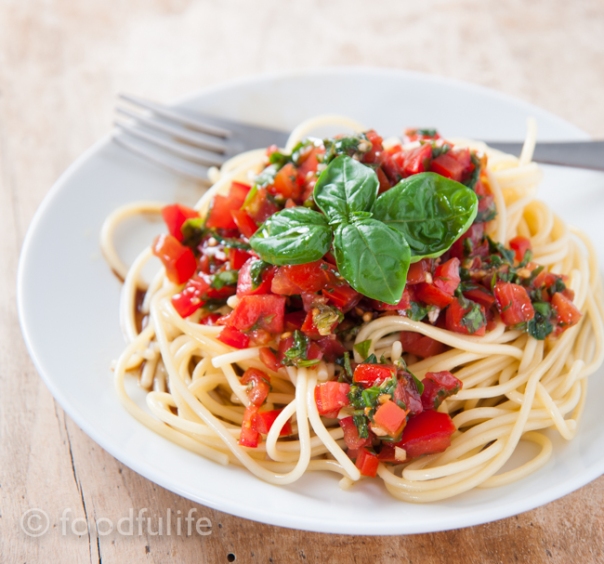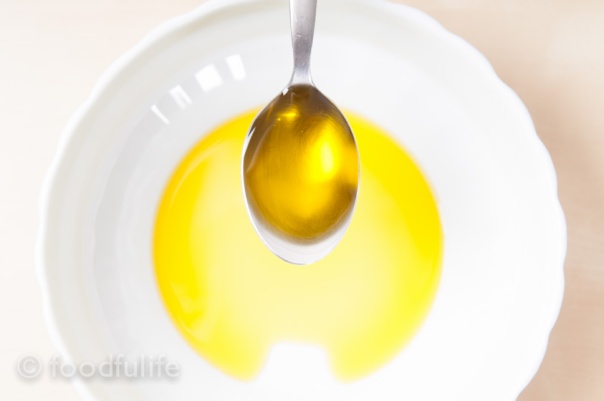The basics.
A meringue is basically made with two ingredients: sugar and egg whites.
In Italian cuisine we often use three types of meringue: the classic, the French or Italian meringue.
While the classic and French meringues are both baked, the Italian meringue is usually pasteurised (“cooked” at a very low temperature) by adding hot sugar syrup during the preparation process and it is generally used in creamy desserts or cake decorations/ fillings.

Classic or French meringue?
The main difference between French and classic meringues is in the preparation methods. In fact, both these meringues are made with the same ingredients and cooking methods, but they differ in the way in which the sugar is added to the recipe and (slightly) in their final consistency. In the classic meringue the sugar is added at the end of the process, incorporating the sugar with a spatula when the egg whites are firmly whipped; while in the French meringue the sugar is added gradually during the whipping process.


In this article we will see the preparation process for the French meringue, which is quite light and crispy.

…And yes, it’s hard to get it right, but not impossible!
Basic French meringue recipe.
Preparation time: 10 minutes
Cooking time: 3 hours
Ingredients
For 25 meringues (two oven trays)
100 g egg whites
200 g granulated sugar (use icing sugar for a finer grain)

Method.
1. Using an electric beater, beat the egg whites with 1/3 of sugar (about 66 g) starting with a medium-low power.
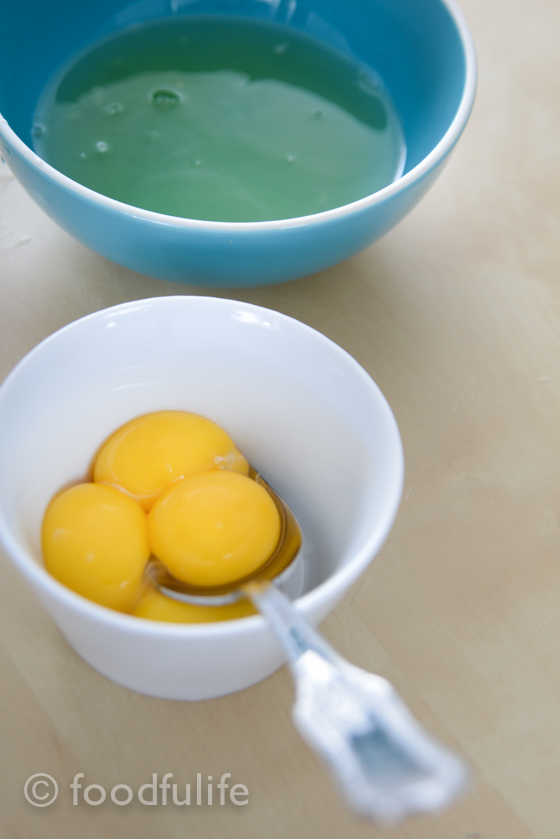
2. Once the egg whites have doubled in volume, add another 1/3 of sugar and beat at a medium-high power.

3. When the egg whites are almost stiff, add the rest of the sugar and continue to beat until the mixture is thick and glossy.


4. Line the base of an oven tray with baking paper, then, using a piping bag, make the meringues (5 cm wide x 3 cm thick).

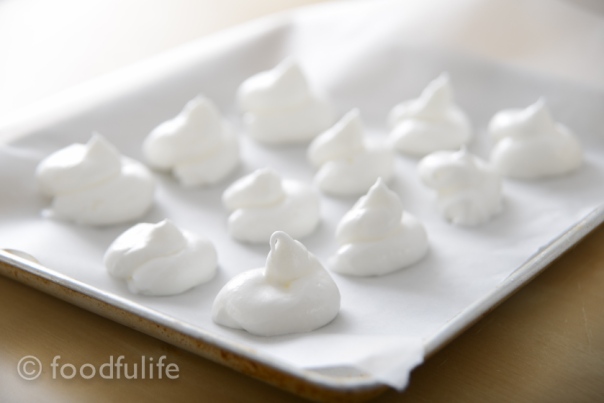
5. Bake at 85-100° C ( 185- 212°F) for 3 hours (the cooking time depends also on the oven you use). Let cool completely on wire rack and then place in a airtight container.
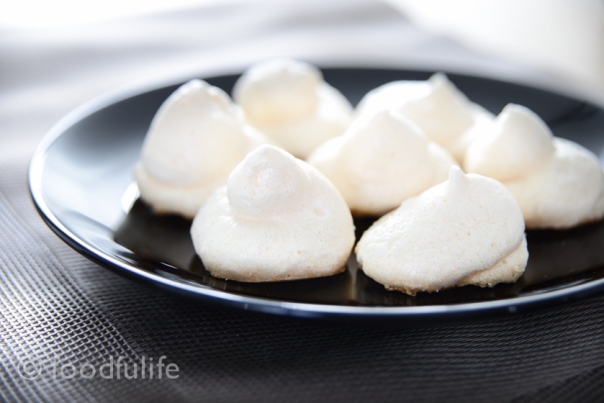


A few things to keep in mind…
About the ingredients.
1. As a basic rule, the weight of the sugar must be double compared to that of the egg whites.
2. You can add something a little acidic, like lemon juice, to help the whipping process. The doses: use 1/2 a teaspoon of lemon juice for 100 g of egg whites.
3. It is possible to add a little cornstarch in order to better maintain the shape of the meringues during the cooking process.
4. Don’t add any salt because it won’t help the whipping process. Some recipes might suggest the opposite, but it is not correct.
About the preparation method.
1. Separate the egg whites from the yolks well, even small traces of egg yolk will compromise the end result.
2. The equipment used during the whipping process should have been properly cleaned, dried and possibly quite cold. All these elements will help you to achieve the perfect meringue!
About the cooking method.
1. Cook the meringues at a very low temperature to avoid any changes in colour or cracks on the surface (basically the meringues have to dry out slowly in the oven). Best cooking temperature: 85 -100 ° C ( 185- 212°F).
2. If you want to dry the meringues completely, to preserve them for longer, you can leave them in the oven (turned off) for a few hours, after the cooking process.

Ricetta base per la meringa francese.
Tempo di preparazione: 10 minuti
Tempo di cottura: 3 ore
Ingredienti
Per 25 meringhe (per 2 teglie rettangolari)
100 g di albumi
200 g di zucchero semolato (potete usare zucchero a velo per una meringa con grana più fine)
Preparazione.
1. Con uno sbattitore elettrico (utilizzando una potenza medio-bassa), incominciate a montare gli albumi con 1/3 di zucchero (circa 66 g).
2. Quando gli albumi saranno raddoppiati di volume, aggiungete ancora 1/3 di zucchero e aumentate la potenza.
3. Ad albumi quasi montati a neve, aggiungere il resto dello zucchero e continuare a montare fino ad ottenere un composto denso e lucido.
4. Ricoprite la base di una teglia con carta da forno, poi, utilizzando un sac à poche, date la forma alle meringhe (5 cm di larghezza x 3 cm di altezza).
5. Infornare a 85-100 ° C per 3 ore (il tempo di cottura però dipende dal forno utilizzato). Fate raffreddare bene, poi conservate le meringhe in un contenitore a chiusura ermetica.
Note.
Per gli ingredienti.
1. Come regola generale, il peso dello zucchero deve essere il doppio di quello degli albumi.
2. Si può utilizzare del succo di limone per far montare meglio gli albumi. Dosi consigliate: 1/2 cucchiaino di succo di limone per 100 g di albumi.
3. Aggiungendo un po ‘ di amido di mais le meringhe manterranno meglio la forma durante la cottura.
4. Il sale non aiuta a montare meglio gli albumi, se potete non utilizzatelo.
Per la preparazione.
1. Separate bene gli albumi dai i tuorli, perché piccole tracce di tuorlo possono compromettere il risultato finale.
2. L’ attrezzatura deve essere pulita, asciugata e possibilmente fredda.
Per la cottura.
1. Le meringhe devono cuocere a temperatura molto bassa per evitare un cambiamento di colore o la formazione di piccole crepe sulla superficie. La temperatura di cottura più indicata è tra 85-100 ° C.
2. Le meringhe si conservano a lungo quando sono molto asciutte. A cottura terminata, potete lasciare le meringhe nel forno per qualche ora per farle asciugare completamente.





















